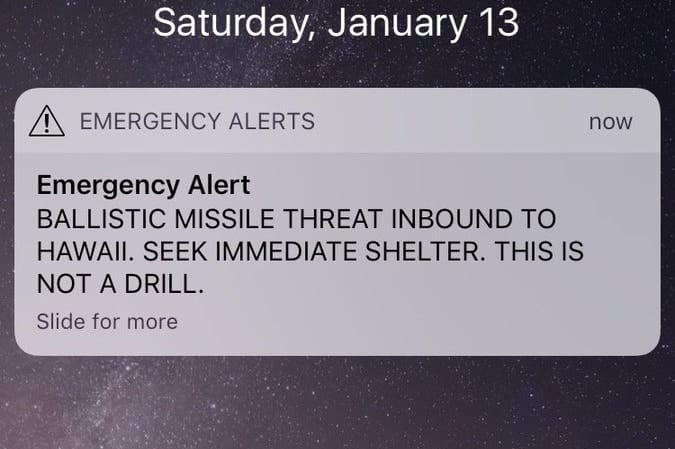What To Do If There’s A Nuclear Attack In Brooklyn

After Hawaii residents received a false emergency alert on their phones on Saturday saying, “BALLISTIC MISSILE THREAT INBOUND TO HAWAII. SEEK IMMEDIATE SHELTER. THIS IS NOT A DRILL,” it makes Brooklynites wonder: what if there’s a missile threat inbound to Brooklyn one day?
HAWAII – THIS IS A FALSE ALARM. THERE IS NO INCOMING MISSILE TO HAWAII. I HAVE CONFIRMED WITH OFFICIALS THERE IS NO INCOMING MISSILE. pic.twitter.com/DxfTXIDOQs
— Tulsi Gabbard (@TulsiGabbard) January 13, 2018
According to ready.gov, “A nuclear blast is an explosion with intense light and heat, a damaging pressure wave, and widespread radioactive material that can contaminate the air, water, and ground surfaces for miles around.” It can come in the form of a missile or a portable nuclear device transported by an individual. Either way, it can be deadly.
The government website also says there are three important factors in protecting yourself in case of an attack: managing distance, shielding, and time.
Distance – the more distance between you and the fallout particles, the better. An underground area such as a basement in a home or office building offers more protection than the first floor of a building.
Shielding – the heavier and denser the materials – thick walls, concrete, bricks, books, and earth – between you and the fallout particles, the better.
Time – fallout radiation loses its intensity fairly rapidly. In time, you will be able to leave the fallout shelter. Radioactive fallout poses the greatest threat to people during the first two weeks, by which time it has declined to about 1 percent of its initial radiation level.
The important step, however, is getting to a fallout shelter. A fallout shelter is any protected space with walls and roof thick and dense enough to absorb radiation, the website says. These shelters should also have a supply of food and water.
But according to a Reuters report, NYC began removing the pre-existing fallout shelter signs in December of last year, citing that “many are misleading Cold War relics that no longer denote functional shelters.”
Though BKLYNER is working to get updated information and locations of these shelters, Ready.gov states that any protected space with thick walls and a roof will suffice, as “any protection, however temporary, is better than none at all.”
The website notes it also doesn’t hurt to create an emergency kit in advance—it won’t just help you with a potential nuclear blast, but also natural disasters. The kit should include all the necessities: water, food, batteries, flashlight, first aid kit, whistle, dust mask, some towelettes, wrench or pliers, can opener, and a map.
The most important thing, however, is to stay alert, stay safe, and follow directions from emergency response personnel.



